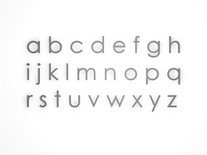The clinician-directed approach

The clinician-directed approach is perhaps the dominant language intervention method used in the speech
pathology profession.
Clinician-directed methods have many strengths but also some flaws.
The clinician-directed approach allows speech-language pathologists to control all aspects of language stimulation.
This means that clinicians guide the session and eliminate all distractions and focus the student's attention on the selected language task.
The clinician decides which language form needs to be targeted, which materials to use, in
what order the materials are to be used, how often the student needs to be reinforced, the type of reinforcement to be used, the contingencies to be used, and when to
use those contingencies.
It's important to understand that the clinician-centered philosophy is based on the traditional
behaviorist approach.
If you're really keen on learning more then please follow this
link.
The clinician-directed approach (The pro's)
This method does have a number of advantages. First and foremost it focuses the student on the language skill we want them to use. In so doing, this method
maximizes the student's practice and use of the target skill.
It's also a highly unnatural way of learning language. This is actually a good thing.
Let me explain.
Most of the children we see with language disorder are kids who fail to learn
language well in the natural environment. This could happen for any number of
reasons.
The point is this, if children have difficulty learning language in a natural context then a more
systematic, structured, clinician-directed method may help them to learn language skills.
Clinician-directed methods work well for this reason. Children with language difficulty often do need the extra structure that this method provides.
The clinician-directed approach (The con's)
The biggest criticism about clinician-directed methods is that it's very difficult for students to transfer the new skills they've learnt in the clinic setting to real life.
That is, they are often unable to use their new language skills in their school and personal lives.
The language skill does not generalize well.
Perhaps one of the reasons new language skills don't generalize is that students are often taught those skills
without a context to place them in.
And, often the result is that the student, without a familiar context in which to learn the new concepts, fails to properly understand or retain the information.
Students with language impairment have
a better chance of retaining new information if it's presented within a familiar context, such as a storybook.
The clinician-directed method doesn't address this particular area terribly well.
References
DeKemel, K.P. (2003) Intervention in Language Arts: A Practical Guide for Speech-Language Pathologists. Butterworth-Heinemann.
Norris, J.A. (1991) From Frog to Prince: Using Written Language as a Context for Language Learning, Topics in Language Disorders. Vol 12, 66-81
Wallach, G.P. (2008) Language Intervention for School-Age Students: Setting Goals for Academic Success. Mosby Elsevier
Content Updated 8/11
Return from Clinician-Directed Approach to Oral Language Strategies
Enjoy this page? Please pay it forward. Here's how...
Would you prefer to share this page with others by linking to it?
- Click on the HTML link code below.
- Copy and paste it, adding a note of your own, into your blog, a Web page, forums, a blog comment,
your Facebook account, or anywhere that someone would find this page valuable.
|